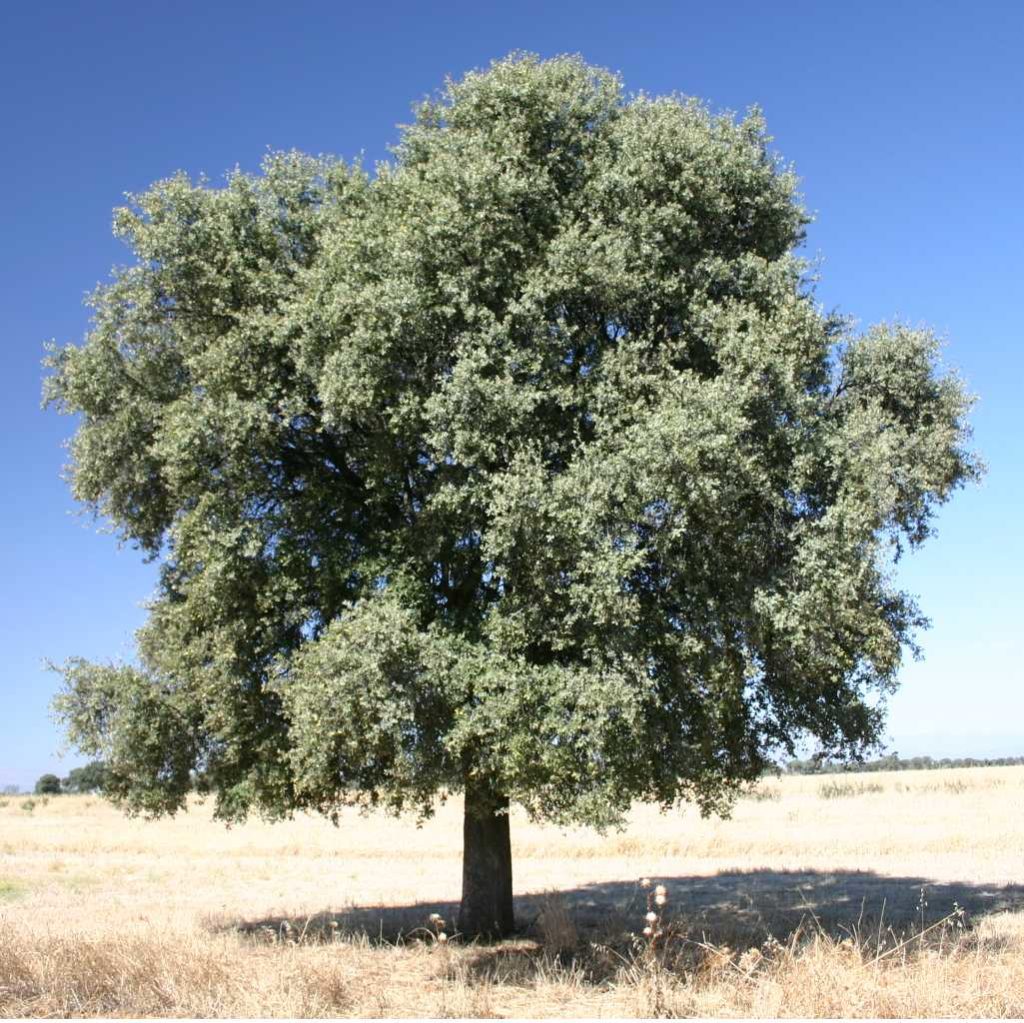Next time you are out and about, look for evergreen holm oaks Quercus ilex; a common site in Bishopsteignton and in local coastal areas. Saplings often pop–up in local gardens. It was first brought to the UK over 400 years ago, it was widely planted during the 18th century and was first recorded in the wild in 1862. It has become an aggressive coloniser in parts of southern England, replacing native vegetation.
It is described as a distinctive type of oak, the mature leaves of which are retained over the winter and are not lobed like other oaks. The leaves are dark and shiny on the upper surface, slightly downy on the lower surface, and when young can be toothed and slightly spiny like a holly leaf, which is where it gets its Latin name ‘ilex’ from (the Latin for holly is Ilex aquifolium). The acorn is light green in colour with up to two-thirds enclosed in the scaly cup. It is an evergreen species, so can be identified by its leaves throughout the year. The young leaves are serrated with slightly spiny edges and may be confused with native holly. It flowers in late June and the fruits ripen in October.

